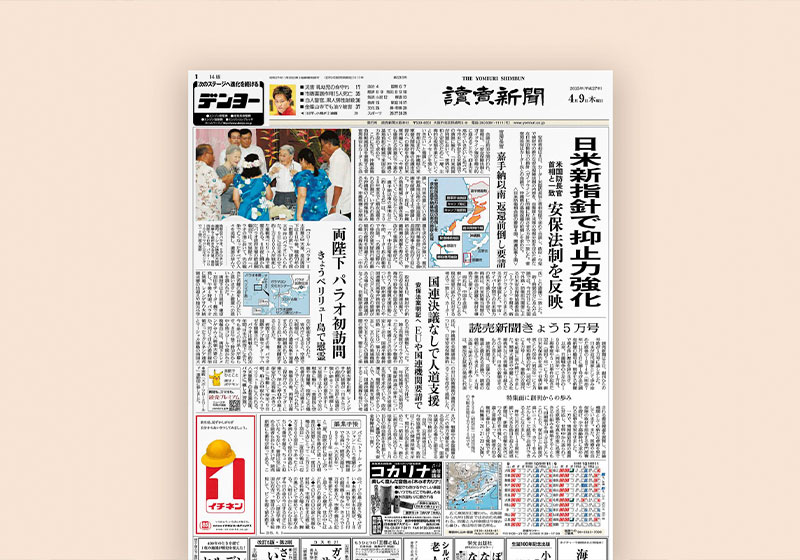Table of Contents
Here in the West, we tend to assume that the newspapers with the biggest readerships in the world are in English, forgetting that the most populous countries are also full of readers. In this and future articles, we’ll go on a journey to explore some of the most important Asian newspapers, with circulations that stretch into the millions. Impossible to imagine nowadays in the West, but still reality in the East.
The first newspaper we’d like to take a look at is the Yomiuri Shinbun from Japan.
Founded in 1874, it’s considered the best-selling newspaper in the world, with a circulation of over 7 million copies – at its peak, in 1994, this figure reached an incredible 10 million! Another two of the top ten biggest-selling newspapers in the world are also Japanese, making Japan the country that reads the most news in paper form, rather contradicting the image we have constructed in the West (the fault of a few famous films) of an ultra-high-tech nation.
Analysing the paper’s graphic design is obviously quite challenging: the columns are organised differently due to the language’s reading direction, and the typefaces are designed to be suited to ideograms, not Western characters. Nevertheless, we thought it would be interesting to have a closer look at the editorial approach and graphical layout of this important newspaper.

Centuries-old authoritative journalism
The Yomiuri Shinbun has earned itself a strong reputation in the Japanese news landscape. It is conservative and pro-Western in nature, with a long history of major scoops as well as its fair share of criticism and mistakes, just like any self-respecting major newspaper.
For the first 80 years of its life, the Yomiuri Shinbun’s distribution was limited to Tokyo (although ‘limited’ here should be placed in inverted commas, given how many people live in the Japanese capital!). It only became a national paper in 1952, and within a few years reached a circulation of 1 million copies.

The paper’s publishing group also produces a daily English-language newspaper, The Japan News, and is the leading news provider in Japan, both in terms of the quality of its output and its authoritative journalism.
It is printed in a large ‘blanket’ format measuring roughly 54 x 40 cm, following the tradition that dictates that a large format equates to an authoritative paper, rather than bowing to the Western trend of making newspapers smaller.
The way politics was reported on in Japanese newspapers changed considerably over the course of the past century – it was really only after the Second World War that a free press and editorial independence comparable to European standards were introduced.
Newspapers still play a vital role in Japanese people’s lives, to the extent that papers like the Yomiuri Shinbun still produce two editions a day, a practice that is long extinct in Europe and America and would never even be considered nowadays.

As we mentioned above, to discuss the paper’s graphic design and fonts we first need to immerse ourselves in the Japanese world, with its calligraphy, ideograms and different reading direction (from right to left and, in some cases, from top to bottom). The hierarchical structure of the information and the different sections are quite clear. Every now and again the newspaper plays around with the graphic design on the inside pages, but generally it is linear and understated throughout.

The newspaper is laid out in multiple columns across a large ‘blanket’ format, the standard size used by all the leading Japanese titles.
Colour is used very sparingly: indeed, none of the Japanese dailies are overly colourful, instead maintaining a low-key demeanour.
Images are only used when strictly necessary, and photographs never dominate the pages. Tradition is of paramount importance for Japanese newspapers, hence the austere look and the priority given to functionality.

The logo, written in traditional Japanese characters, was recently redesigned, with the addition of the name in Western characters too.


Takeaways
The Yomiuri Shinbun remains a mainstay of Japanese journalism, combining a long history with innovative exploration of the digital world and the international market. Despite the controversies it has caused and criticism it has received for various historical incidents, it remains one of the few newspapers that can both inform the public and influence public opinion, in part thanks to its enormous circulation. It currently boasts incredible sales figures compared to Western titles, and it plays a central role in Japanese news provision. All of which makes it a very interesting case study for fans of the printed word and newspapers who want to turn their gaze to the Far East.


